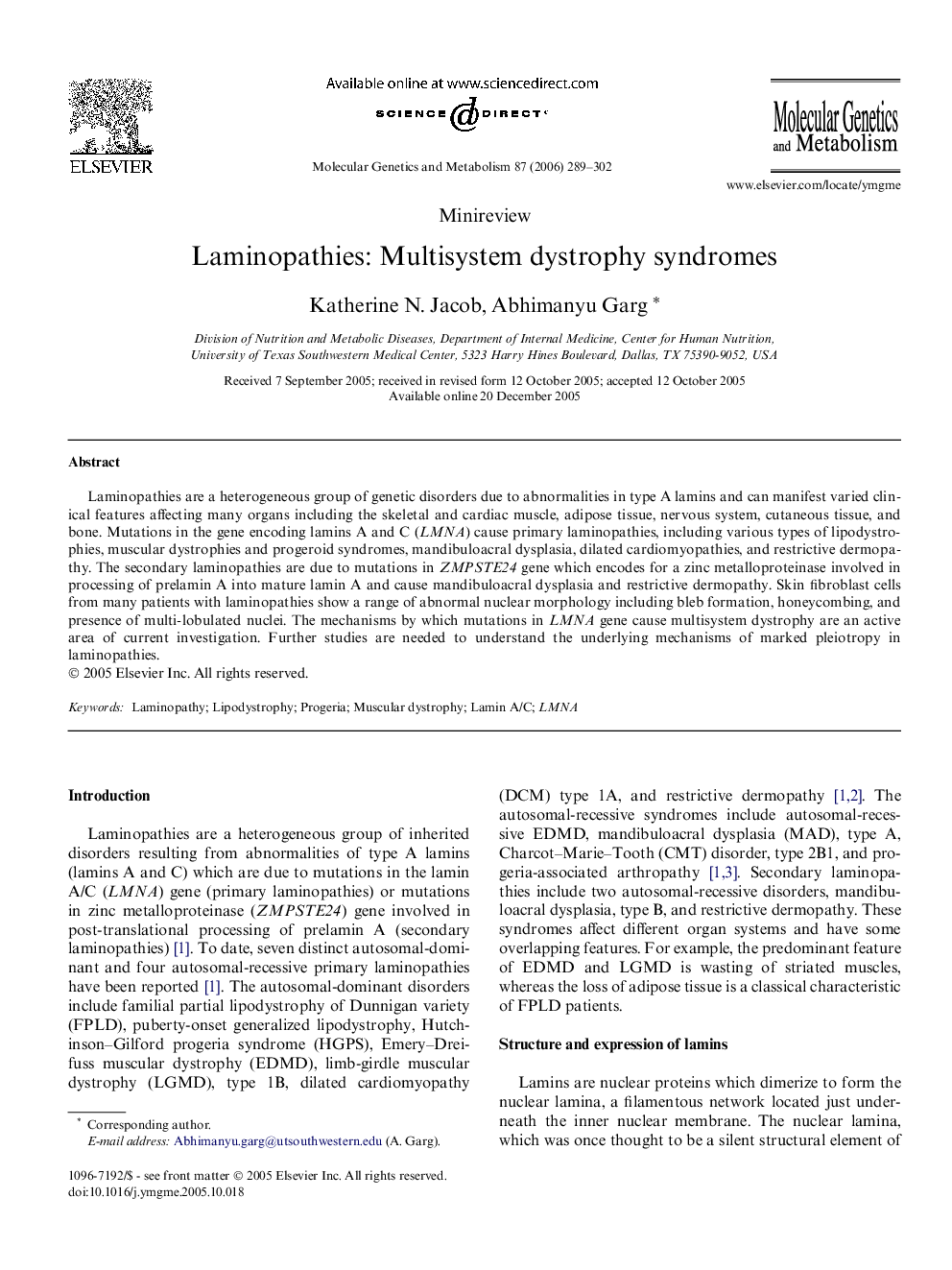| Article ID | Journal | Published Year | Pages | File Type |
|---|---|---|---|---|
| 1999319 | Molecular Genetics and Metabolism | 2006 | 14 Pages |
Laminopathies are a heterogeneous group of genetic disorders due to abnormalities in type A lamins and can manifest varied clinical features affecting many organs including the skeletal and cardiac muscle, adipose tissue, nervous system, cutaneous tissue, and bone. Mutations in the gene encoding lamins A and C (LMNA) cause primary laminopathies, including various types of lipodystrophies, muscular dystrophies and progeroid syndromes, mandibuloacral dysplasia, dilated cardiomyopathies, and restrictive dermopathy. The secondary laminopathies are due to mutations in ZMPSTE24 gene which encodes for a zinc metalloproteinase involved in processing of prelamin A into mature lamin A and cause mandibuloacral dysplasia and restrictive dermopathy. Skin fibroblast cells from many patients with laminopathies show a range of abnormal nuclear morphology including bleb formation, honeycombing, and presence of multi-lobulated nuclei. The mechanisms by which mutations in LMNA gene cause multisystem dystrophy are an active area of current investigation. Further studies are needed to understand the underlying mechanisms of marked pleiotropy in laminopathies.
